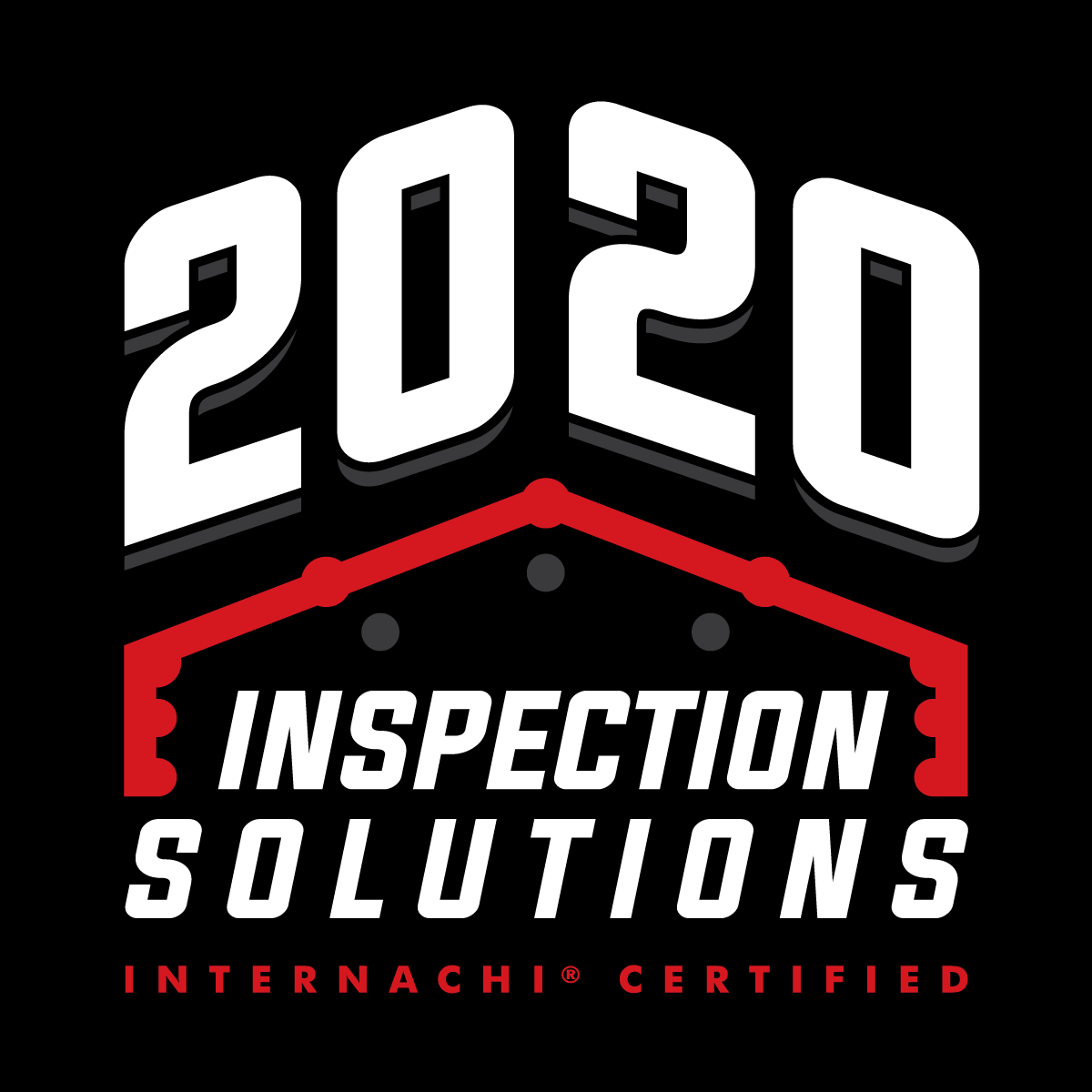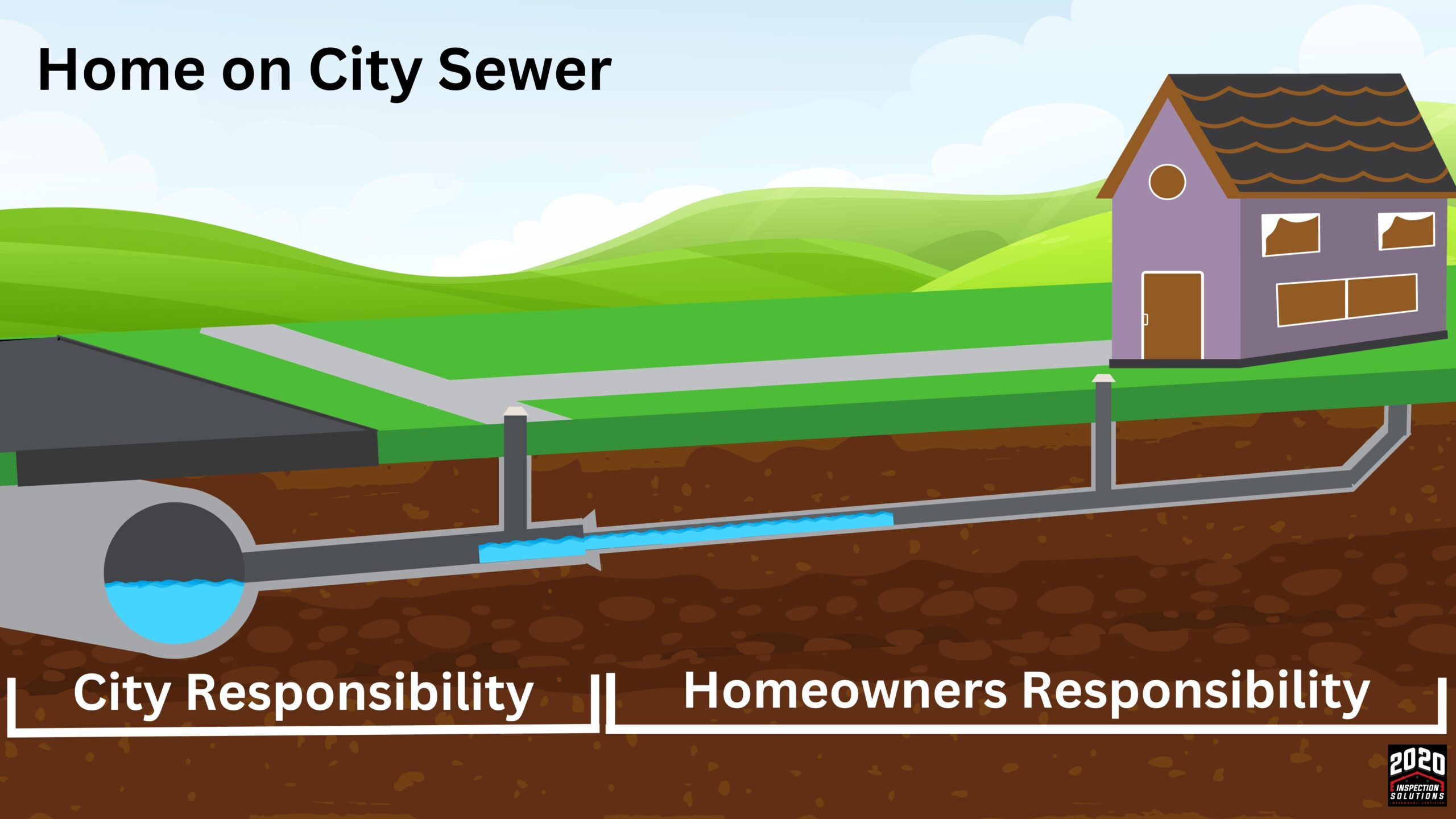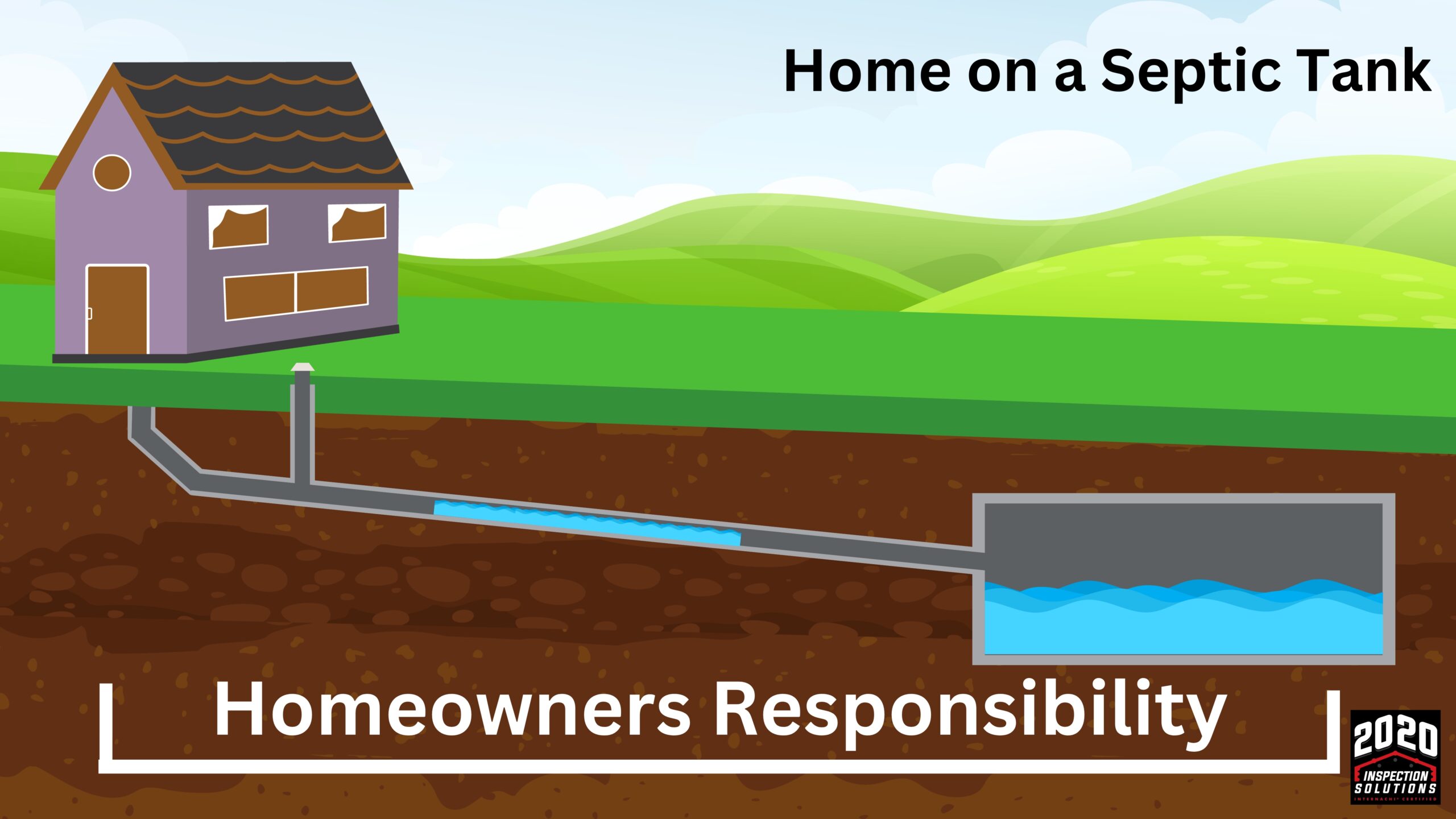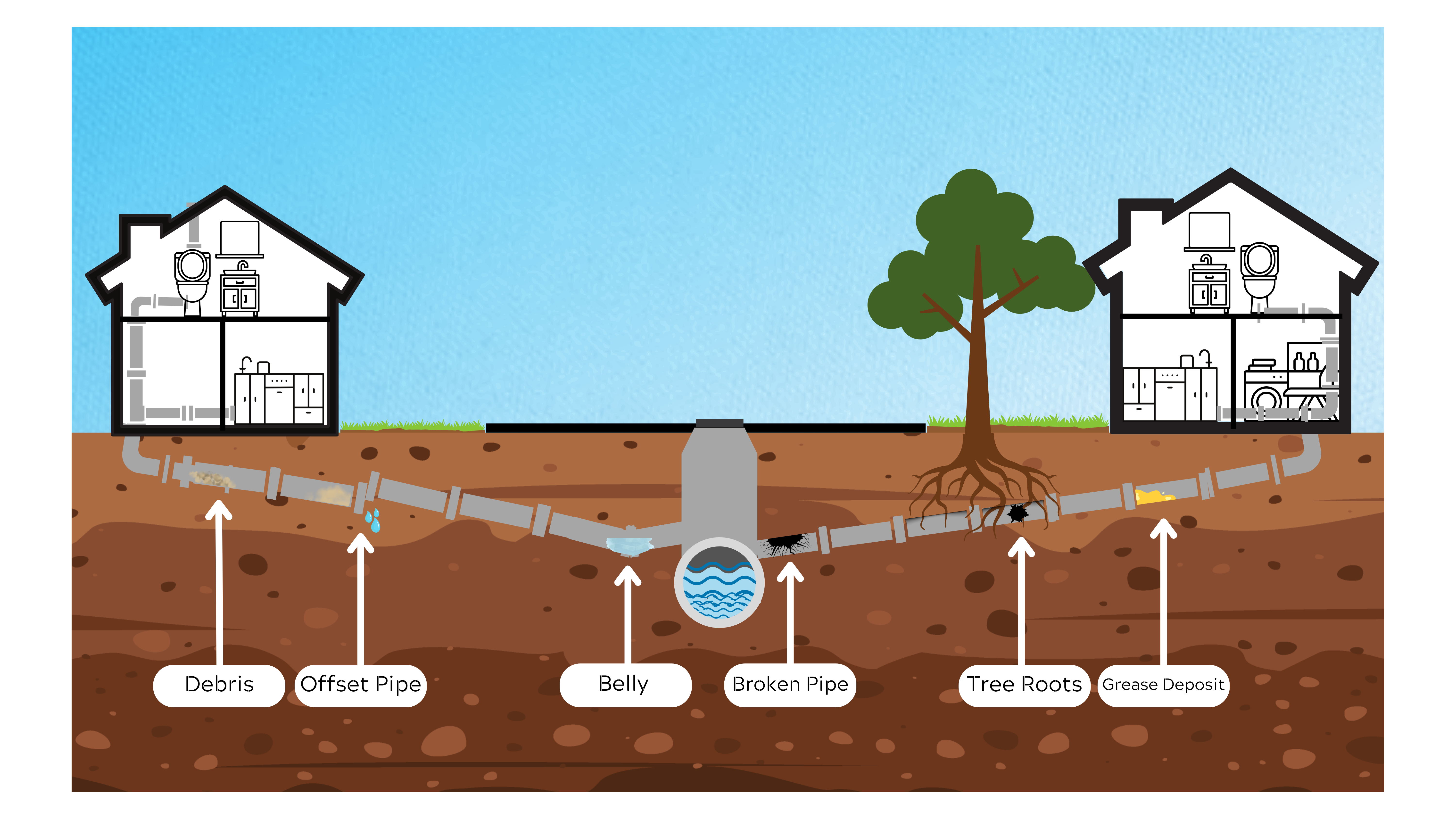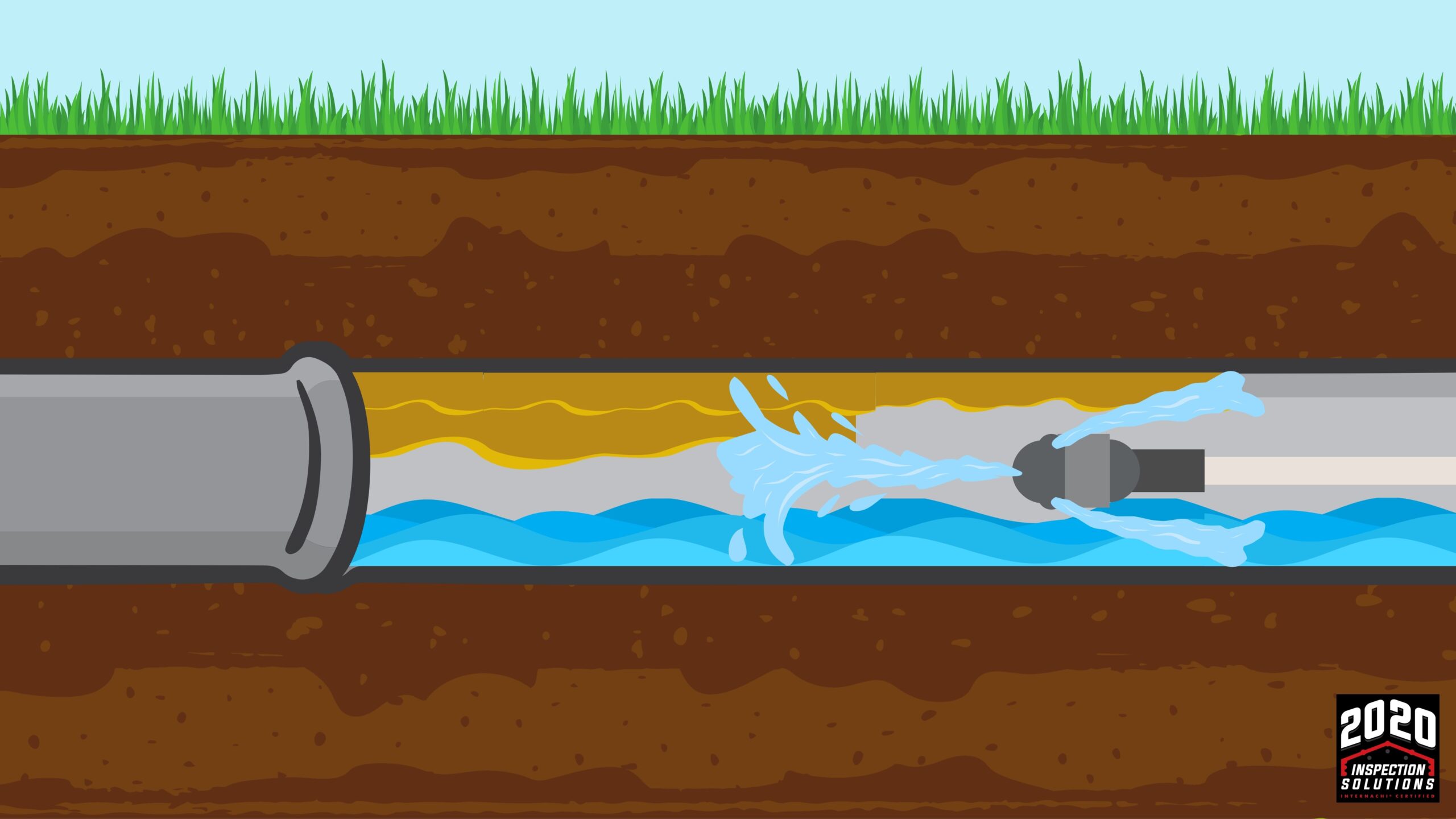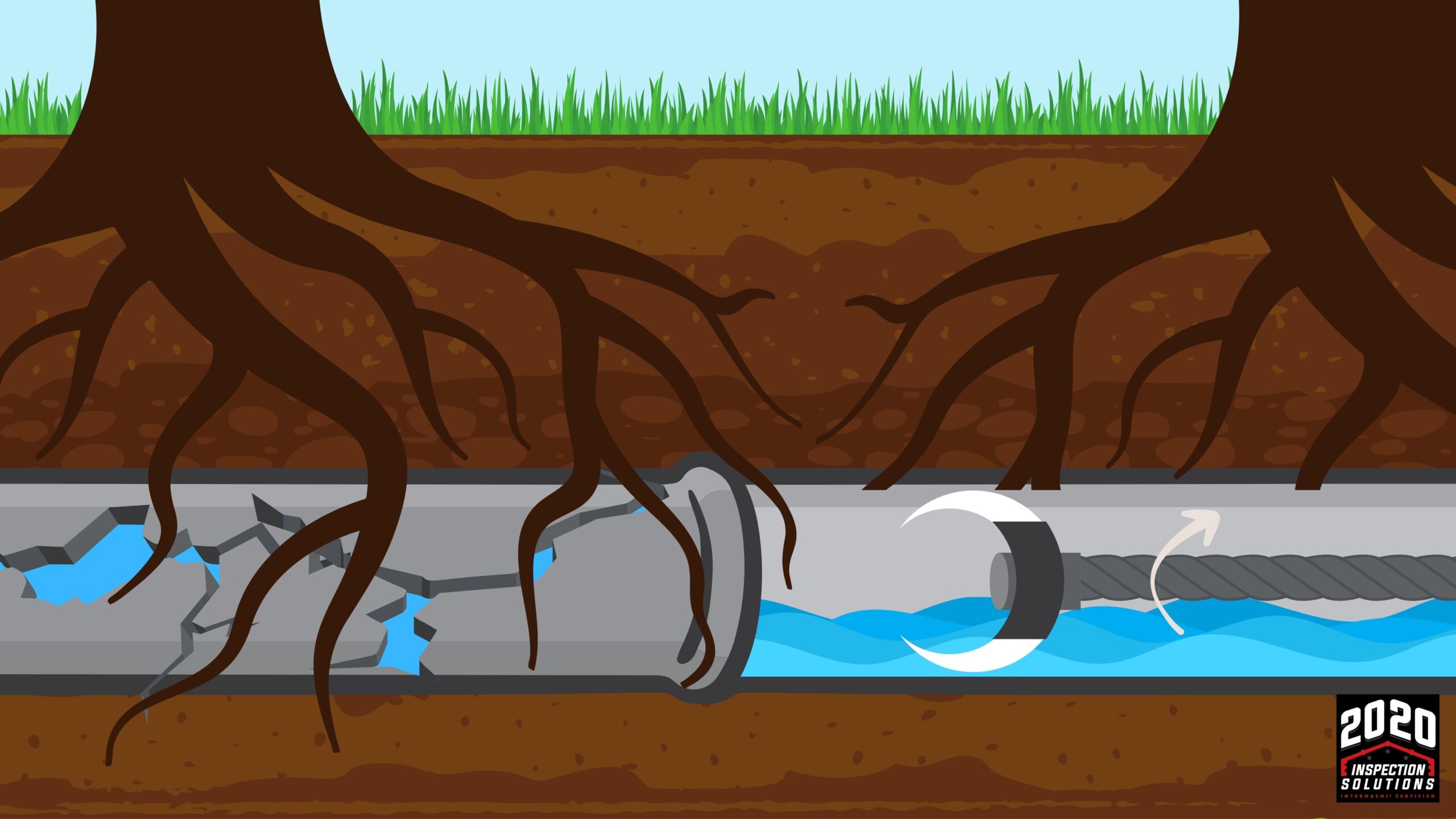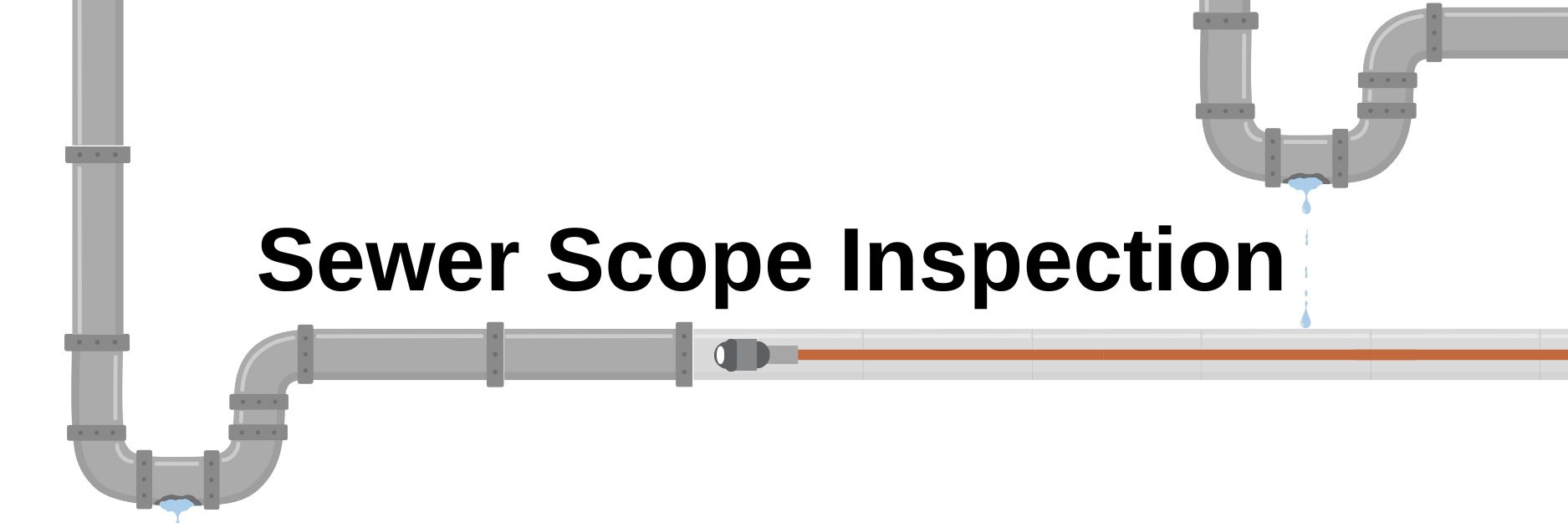
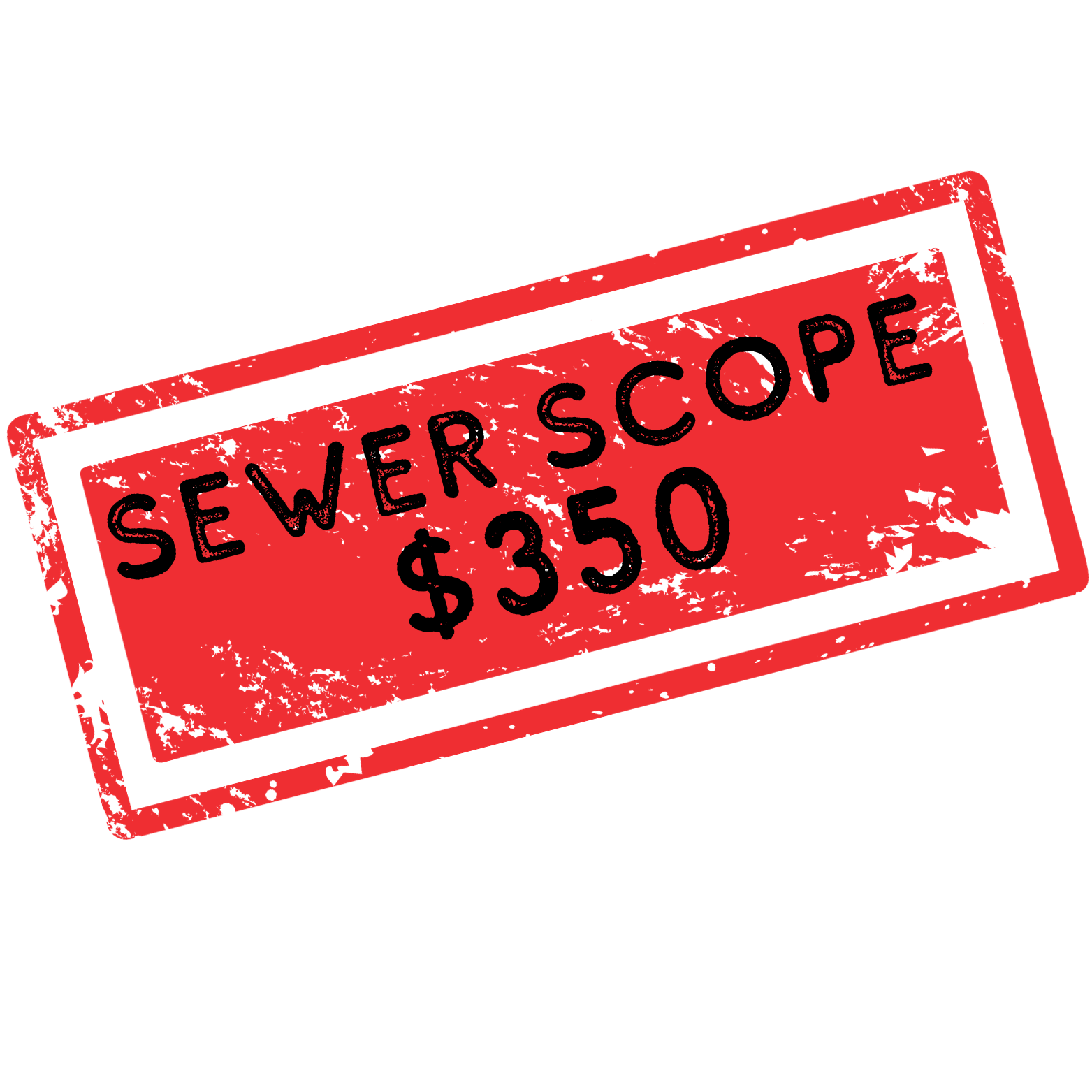
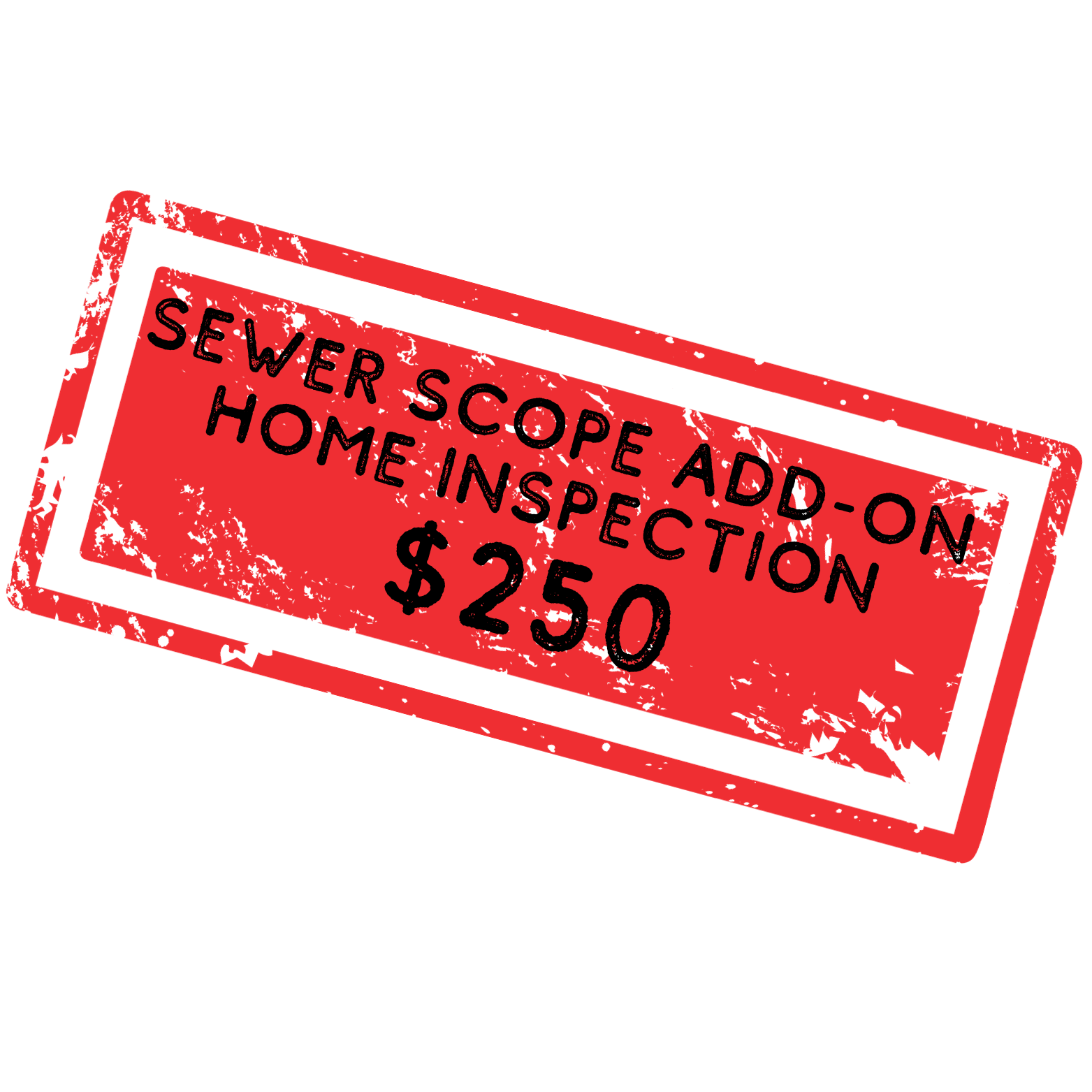
What is a Sewer Scope Inspection?
A sewer scope is a video inspection of the lateral sewer line leading from the house at/near the foundation and connecting to the city or HOA tap or septic tank.
A sewer scope is not a septic inspection that is typically required by FHA or VA loans.
During a sewer scope inspection a camera is inserted into a sewer cleanout or roof vent and is ran through the entire sewer system to view any deficiencies or potential issues within the sewer pipe. Video and photos of the inspection are recorded and used in a sewer scope report. The camera head has a pan and tilt feature that allows us to view a close up of the sidewall of the pipe as well as and junctions.
The camera has a distance counter and can determine the exact distance of any unknown clean outs, and deficiencies found during the inspection.
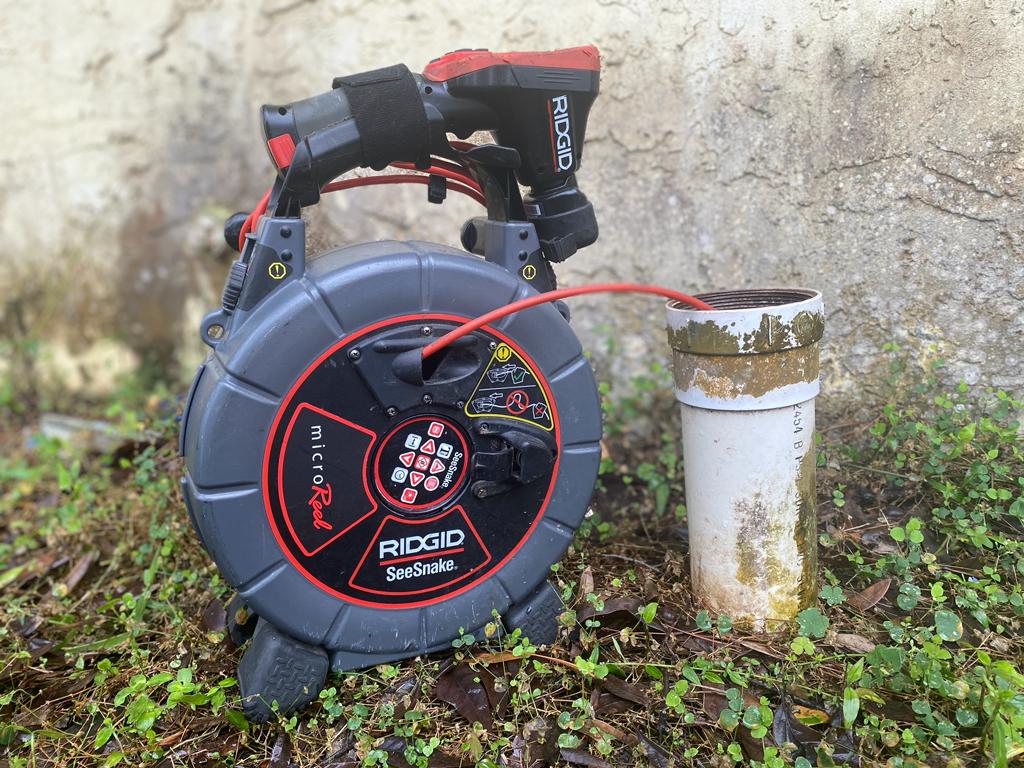
In addition to the distance counter there is a locating device used with the camera. The locater scans the area above ground and locates the exact position of the camera head. This information is valuable because if a deficiency is found then a repair can be made by digging at the exact location where the deficiency is. The locator also shows where the sewer line is in the yard, how deep the sewer line is, and the exact location of the septic tank or city connection.
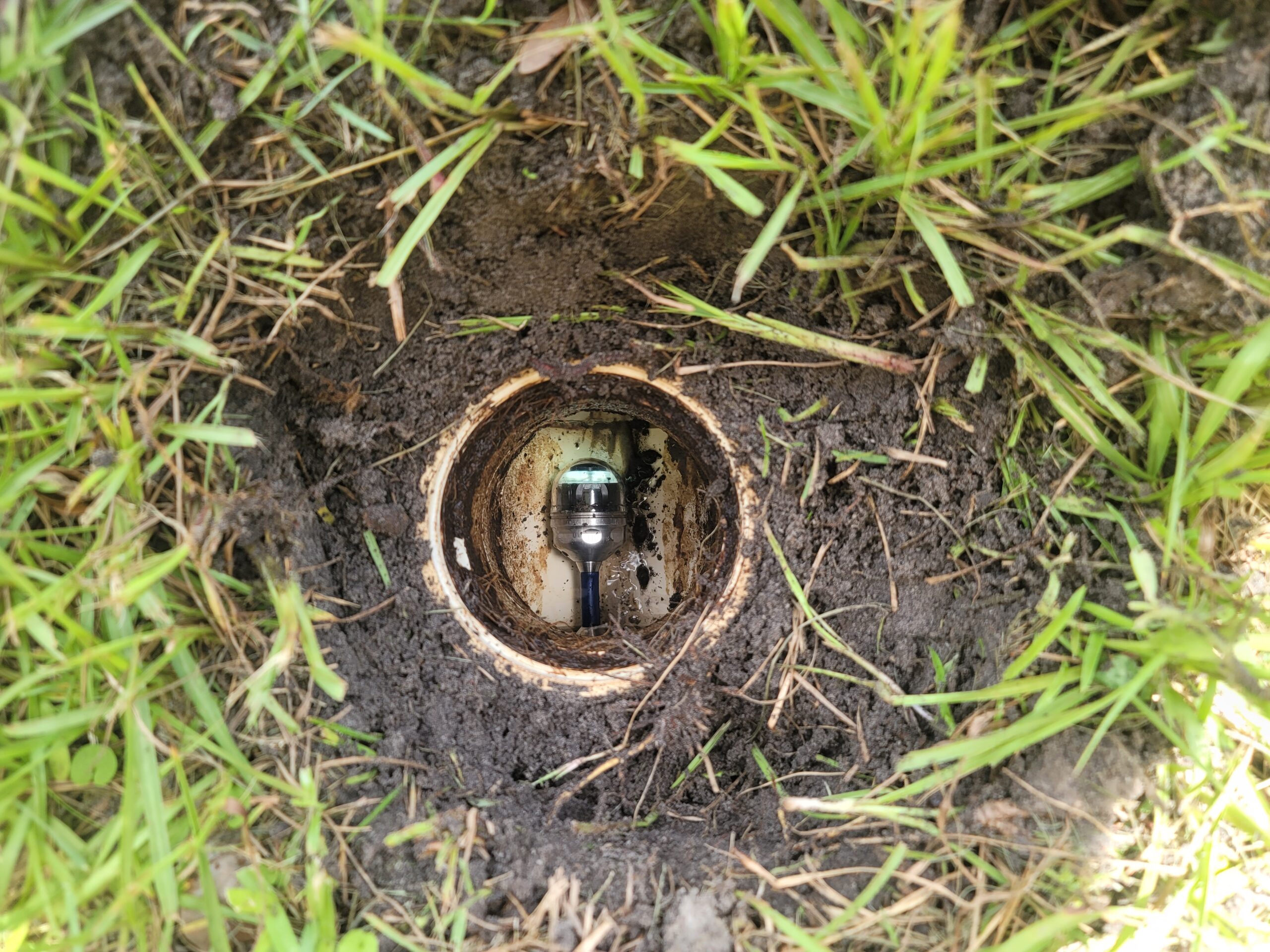
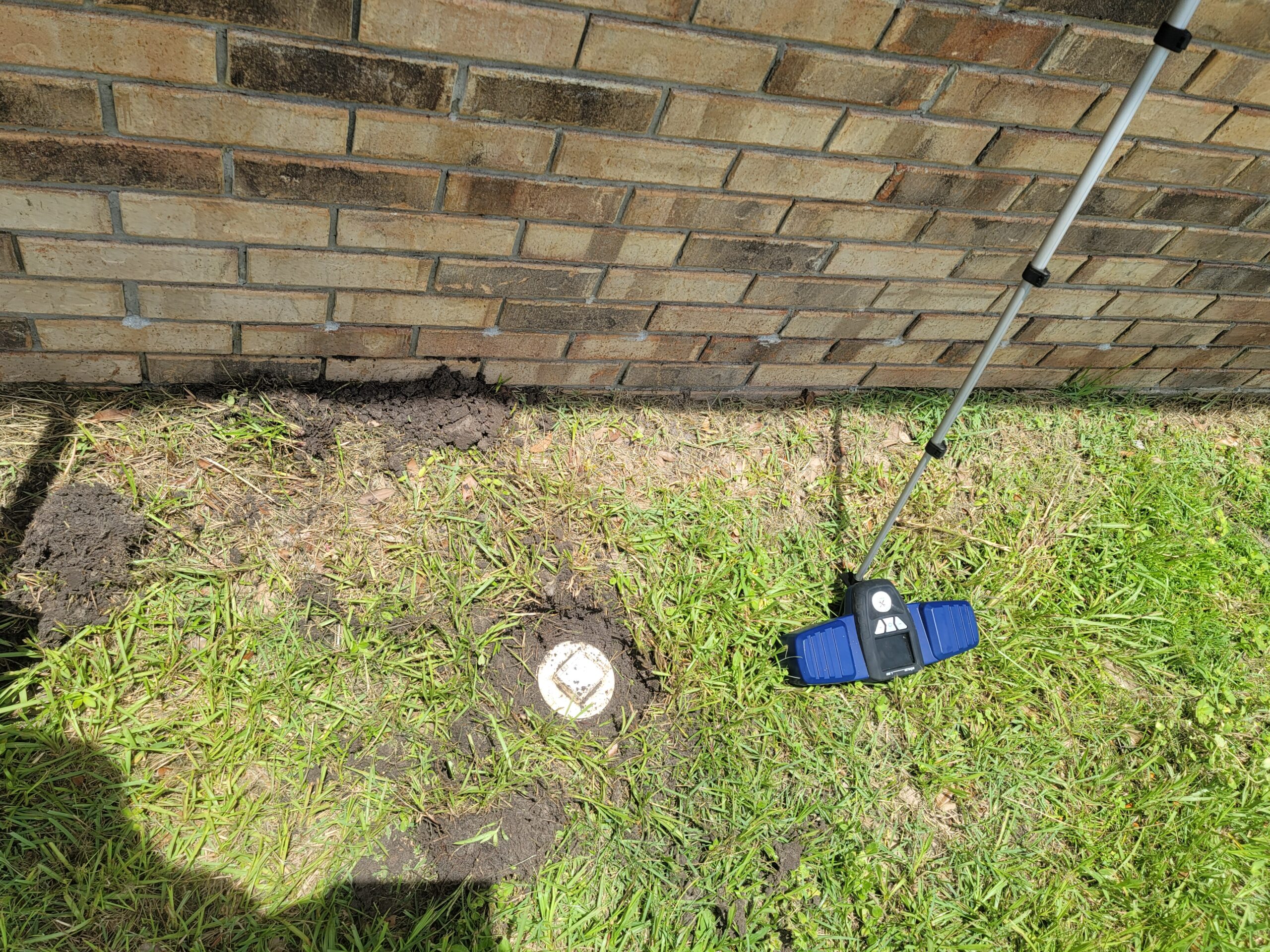
An entire sewer system map is included in the report. This information may be useful to the potential buyer and is included in the sewer scope report.
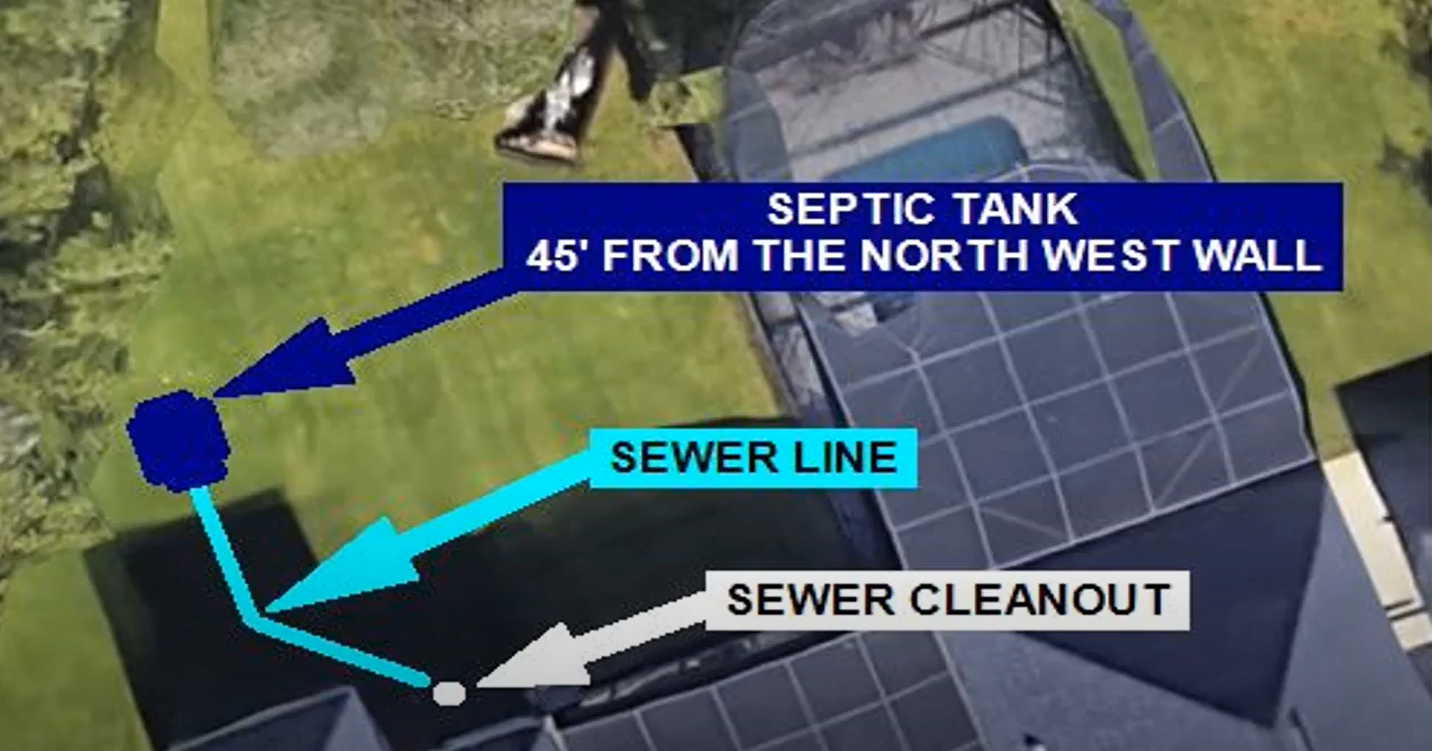
Who Needs a Sewer Scope Inspection?
I don’t have a septic system, I am on city sewage, do I need a sewer scope?
Yes, a sewer scope is an interior pipe inspection from the home to the septic OR to the city sewer connection. Even if the home is on city sewage the lateral pipe going to the city connection is the home owners real property and responsibility.
The sewer line is not backed up or clogged, why would I need a sewer scope?
A sewer scope inspection is designed to find an issue before it becomes an emergency. If a sewer line is backed up and full of water the sewer camera cannot see what the problem is. The camera can find issues in a line that is not full of water.
The current homeowner doesn’t have any sewer line issues. Why would I need a sewer scope inspection if the sewer system is working fine.
Change in dynamics of the home. A properly functioning sewer line should handle the full drain capacity that a home is able to produce without issue. This would mean that a washing machine, dishwasher, and 2 bath tubs can all drain at the same time with no issues. If there is a partial clogg in the line from a root intrusion, collapse, or grease build-up a 2 person home may never realize there is an issue. Typically, they do not do dishes, wash clothes, and take 2 baths at the same time. IF the new home owner is a 4 person household then there is a substantial change in dynamics of the home. It doubled. This household family may use the sewer drain system to its full capacity on a daily basis. This is when a partial clogg or another issues with the sewer system will reveal itself. This usually happens at the worst opportune time (generally shortly after move in) and becomes an emergency that needs to be addressed right away.
What Types of Pipes are Found in Residential Homes?
Orangeburge pipe
may be found in homes built from 1860s to 1970s, Orangeburge pipe is made from wood pulp and tar. Orangeburge pipes are prone to cracks, delamination and collapse due to deterioration.
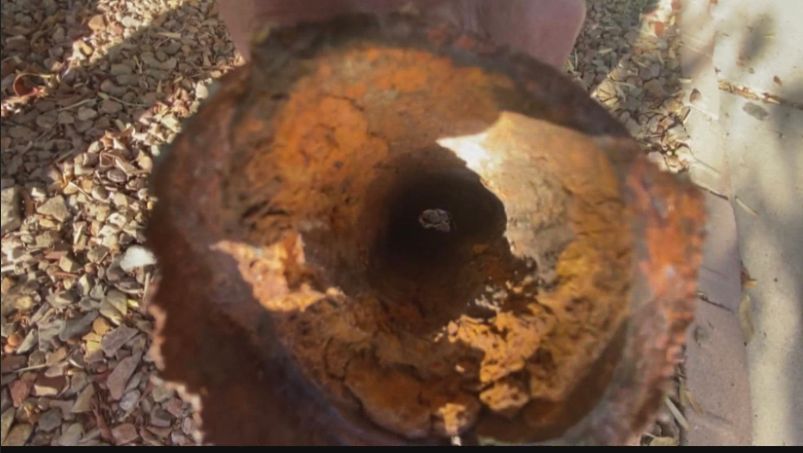
Clay pipe
may be found in homes built from 1800s to 1970s, Clay pipes are porous and brittle and are prone to leaks and breaks.
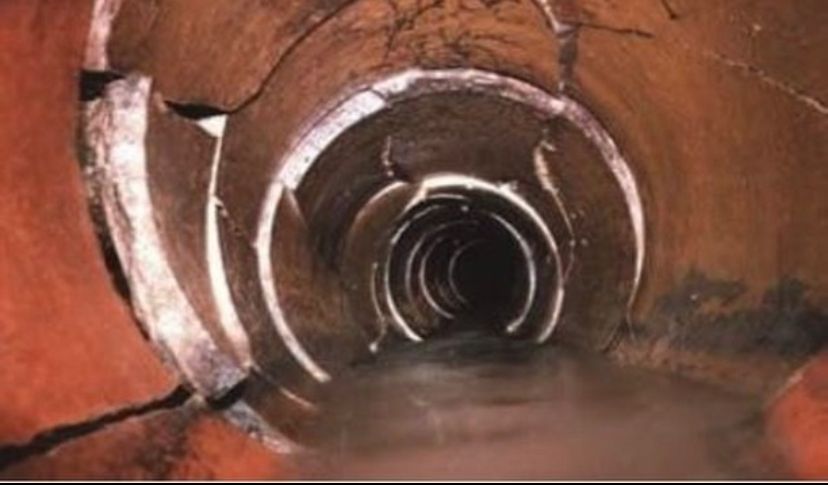
Cast iron pipe
may be found in homes built from 1930s to 1970s, Cast iron is the most common type of pipe found in homes built before the 1980s. Rust build up is the biggest problem with cast iron pipes. Chemicals encourage rust growth in cast iron. This rust will decrease the diameter of the pipe and lead to cloggs. Cast iron pipes can rust completely through and lead to a severe sewage leak.
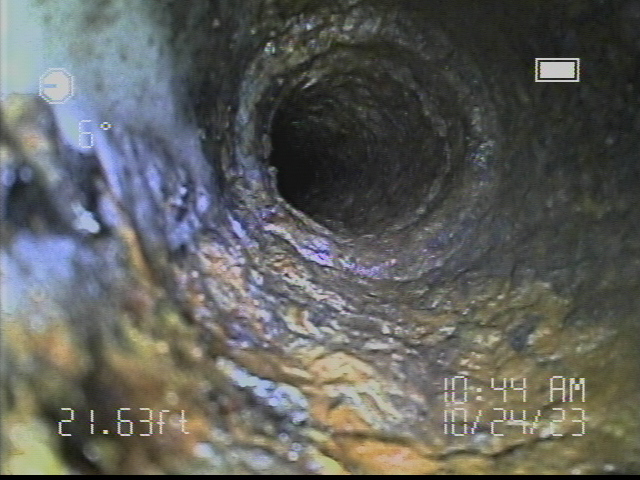
PVC/ABS pipe
may be found in homes built from 1970s to current. PVC pipes have been in service for almost 50 years. These types of pipes have proven to be the best material for sewer lines, although they are not immune to problems. PVC pipes are susceptible to root intrusion, cracks, and blockages but not as severe as the previous versions of sewer lines.
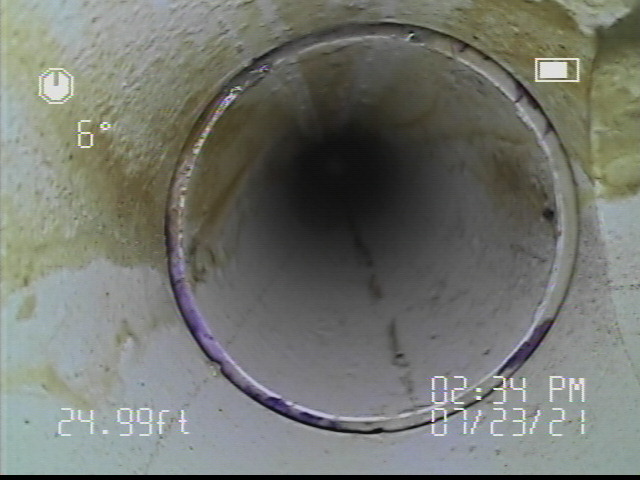
What Part of the Sewer Line am I Responsible for?
The homeowner is responsible for the sewer line on their property. If the sewer system is connected to a city sewer system, the city is not responsible for the sewer line on the homeowner’s property. If there is a septic system on the property, the homeowner is responsible for the entire sewer system.
Build-up
the most common reason for build-up in a sewer line is cooking grease. Grease is very sticky and will stick to the walls of the sewer line. Over time the grease builds up and causes a blockage.
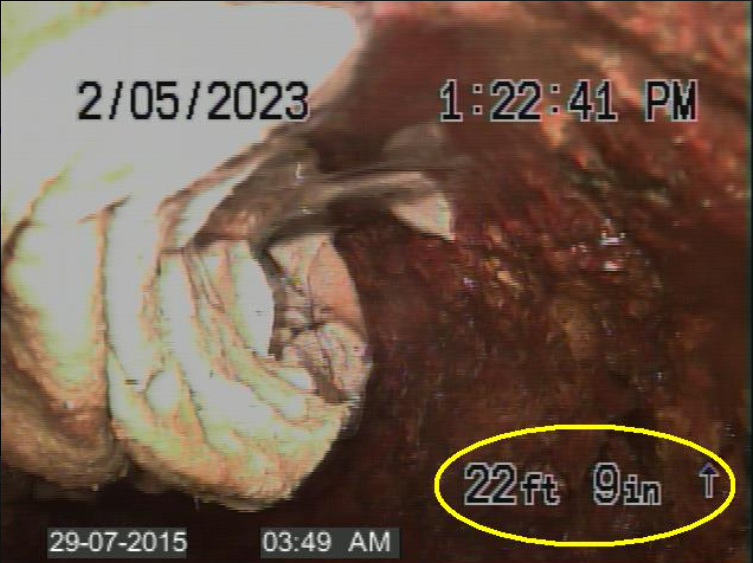
Root Intrusion
Root intrusion is very common when a sewer line is placed near a root invasive plant or tree. The roots will penetrate the pipe wall. Besides the damage to the pipe the roots will cause a blockage.
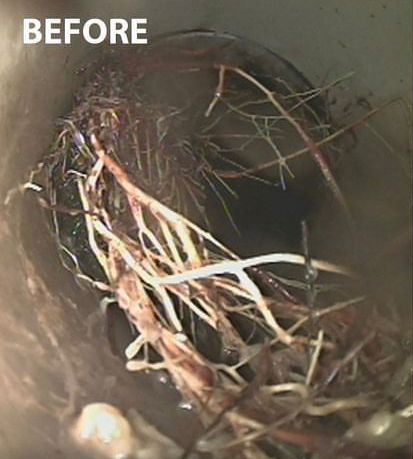
Offsets
Offsets occur where two pipes are joined together. The connection breaks and causes one pipe to no longer be in line with the next pipe and forms an offset. This offset can cause a back-up in the sewer line. During a sewer scope inspection each pipe connection is photographed, and the images are included in the report.

Cracks in the Sewer Pipe
Cracks can be found in any sewer line. Cracks in the sewer line will leak water into the ground and encourage root penetration. Once the roots grow into the pipe a blockage will form and there will be a sewage backup.

Belly Sags
Belly sags, or sagging pipe, is not as common as the other deficiencies found but it is just as serious. Belly sags form from settling pipes. A section of the pipe settles and retains water. The settled section of pipe is an excellent place for solids and grease to collect and build up. Standing water in the sewer line is an indication of a sag in the pipe.
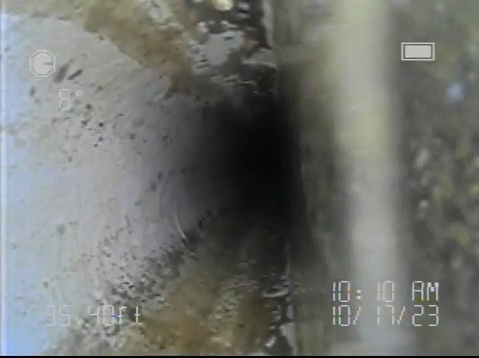
What’s the Solution?
All the deficiencies found during a sewer scope are repairable. Some may be more costly than others.
Buildup of grease
Buildup of grease or any other matter can be removed by sewer jetting. Sewer jetting is a process where a high-pressure water line is ran through the entire sewer system. The jet head has a rotating nozzle and cleans the pipe wall of any build up and debris. This process is fairly simple.
Root intrusion
Root intrusions can be removed by a drain cleaning machine. A root cutting attachment on the drain cleaning machine will remove the roots and clear the sewer line. The sewer line will flow immediately after clearing the line however the roots will eventually grow back into the line and cause a blockage again in the near future. Sewer drain cleaning is fairly simple. However, The sewer drain cleaning machine is only a temporary fix. The sewer line will need to be replaced to prevent another blockage.
Offsets, Cracks, and sags in the sewer pipe
All of these issues will require sewer line replacement. Replacing a sewer line is a big job and usually requires excavation equipment. The defective section of the sewer line will need to be dug up and replaced.
This is why a sewer scope inspection is critical before your home purchase. Know the condition of the sewer line before the purchase in order to avoid costly repairs.
INVESTIGATIVE HOME INSPECTIONS IN CENTRAL FLORIDA
We can inspect homes located throughout Central Florida, in Orange, Osceola, Lake, Volusia, Brevard, Seminole and Polk counties.
At 2020 Inspection Solutions, we offer a professional home inspection that is designed to ensure that your prospective home purchase is able to satisfy your family’s long-term needs. Contact us today to request an inspection.
Appointments are available on weekends and evenings by request. We accept online payments for your convenience.

